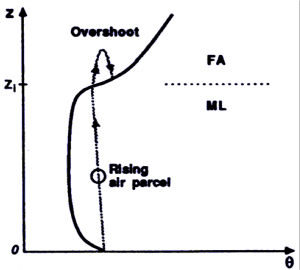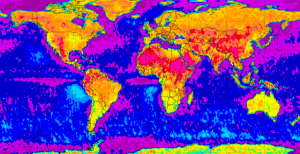NASA PBL (Erica)
Using Satellite Observations of PBL Depth to Improve Estimates of CO2 Sources and Sinks
NASA Earth System Science Fellowship: Erica McGrath-Spangler
2007-2010
 The depth of the planetary boundary layer (PBL) is essential to understanding not only the weather and climate through surface ventilation by clouds and air quality near the surface, but also to studies of the carbon budget. The response of surface concentration of carbon dioxide (CO2) to net ecosystem exchange (NEE) is linearly related to PBL depth and an error in depth relates directly to an error in CO2 concentration. The rectifier effect, the correlation between PBL depth and NEE, is a leading cause of uncertainty in atmospheric CO2 inversions (Denning et al., 1995; 1996; 1999; Gurney et al., 2003). The goal of this research is to optimize a parameterization of boundary layer top entrainment in order to obtain better model estimates of PBL depth and carbon fluxes. This will be achieved by assimilating surface observations of temperature and humidity and observations of PBL depth from CALIPSO satellite data using the Maximum Likelihood Ensemble Filter (MLEF). In addition, respiration and photosynthesis biases in the model will be estimated by assimilating CO2 observations from the in-situ tower network. Evaluation of the model will be performed against weather, AmeriFlux data, and aircraft measurements of CO2.
The depth of the planetary boundary layer (PBL) is essential to understanding not only the weather and climate through surface ventilation by clouds and air quality near the surface, but also to studies of the carbon budget. The response of surface concentration of carbon dioxide (CO2) to net ecosystem exchange (NEE) is linearly related to PBL depth and an error in depth relates directly to an error in CO2 concentration. The rectifier effect, the correlation between PBL depth and NEE, is a leading cause of uncertainty in atmospheric CO2 inversions (Denning et al., 1995; 1996; 1999; Gurney et al., 2003). The goal of this research is to optimize a parameterization of boundary layer top entrainment in order to obtain better model estimates of PBL depth and carbon fluxes. This will be achieved by assimilating surface observations of temperature and humidity and observations of PBL depth from CALIPSO satellite data using the Maximum Likelihood Ensemble Filter (MLEF). In addition, respiration and photosynthesis biases in the model will be estimated by assimilating CO2 observations from the in-situ tower network. Evaluation of the model will be performed against weather, AmeriFlux data, and aircraft measurements of CO2. 


